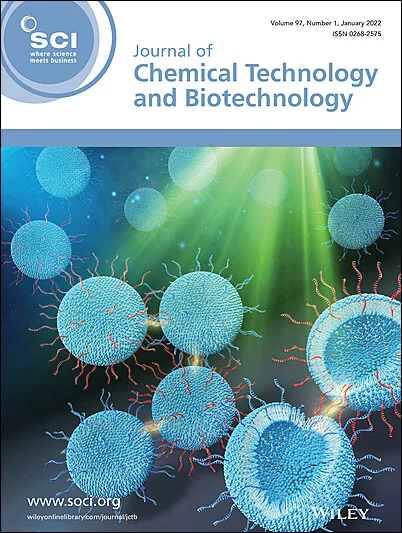Xirong Qiu, Shanjun Liu, Jingwei Geng, Shan Sun, Ran Wei, Yejing Zhang, Jianlin Zhang
求助PDF
{"title":"富铁污泥催化剂催化过硫酸盐降解阿特拉津","authors":"Xirong Qiu, Shanjun Liu, Jingwei Geng, Shan Sun, Ran Wei, Yejing Zhang, Jianlin Zhang","doi":"10.1002/jctb.7885","DOIUrl":null,"url":null,"abstract":"<div>\n \n \n <section>\n \n <h3> BACKGROUND</h3>\n \n <p>Advanced oxidation technology based on persulfate has potential application in the treatment of refractory wastewater. However, due to the high cost of persulfate activation, the promotion of this technology is limited. Economical and efficient persulfate activators need to be developed.</p>\n </section>\n \n <section>\n \n <h3> RESULTS</h3>\n \n <p>A highly efficient persulfate activator was prepared based on iron-rich municipal sludge, which could realize resource utilization of sludge. The removal rate of atrazine could achieve 81.3% within 2 h, and the reaction conditions were atrazine concentration of 4 mg L<sup>−1</sup>, sodium persulfate concentration of 110 mg L<sup>−1</sup>, and activator concentration of 100 mg L<sup>−1</sup>.</p>\n </section>\n \n <section>\n \n <h3> CONCLUSION</h3>\n \n <p>The prepared activators had good pore structures and contained iron complexes, which enabled the effective activation of sodium persulfate for atrazine degradation. The activators were relatively stable, had a wide pH application range, and their activation efficiency could be significantly improved by increasing the temperature. The generation path of free radical mainly based on sulfate radical was speculated, and the possible mechanism of persulfate activation was proposed. © 2025 Society of Chemical Industry (SCI).</p>\n </section>\n </div>","PeriodicalId":15335,"journal":{"name":"Journal of chemical technology and biotechnology","volume":"100 7","pages":"1508-1515"},"PeriodicalIF":2.4000,"publicationDate":"2025-05-06","publicationTypes":"Journal Article","fieldsOfStudy":null,"isOpenAccess":false,"openAccessPdf":"","citationCount":"0","resultStr":"{\"title\":\"Persulfate activation with catalyst derived from iron-rich municipal sludge for atrazine degradation\",\"authors\":\"Xirong Qiu, Shanjun Liu, Jingwei Geng, Shan Sun, Ran Wei, Yejing Zhang, Jianlin Zhang\",\"doi\":\"10.1002/jctb.7885\",\"DOIUrl\":null,\"url\":null,\"abstract\":\"<div>\\n \\n \\n <section>\\n \\n <h3> BACKGROUND</h3>\\n \\n <p>Advanced oxidation technology based on persulfate has potential application in the treatment of refractory wastewater. However, due to the high cost of persulfate activation, the promotion of this technology is limited. Economical and efficient persulfate activators need to be developed.</p>\\n </section>\\n \\n <section>\\n \\n <h3> RESULTS</h3>\\n \\n <p>A highly efficient persulfate activator was prepared based on iron-rich municipal sludge, which could realize resource utilization of sludge. The removal rate of atrazine could achieve 81.3% within 2 h, and the reaction conditions were atrazine concentration of 4 mg L<sup>−1</sup>, sodium persulfate concentration of 110 mg L<sup>−1</sup>, and activator concentration of 100 mg L<sup>−1</sup>.</p>\\n </section>\\n \\n <section>\\n \\n <h3> CONCLUSION</h3>\\n \\n <p>The prepared activators had good pore structures and contained iron complexes, which enabled the effective activation of sodium persulfate for atrazine degradation. The activators were relatively stable, had a wide pH application range, and their activation efficiency could be significantly improved by increasing the temperature. The generation path of free radical mainly based on sulfate radical was speculated, and the possible mechanism of persulfate activation was proposed. © 2025 Society of Chemical Industry (SCI).</p>\\n </section>\\n </div>\",\"PeriodicalId\":15335,\"journal\":{\"name\":\"Journal of chemical technology and biotechnology\",\"volume\":\"100 7\",\"pages\":\"1508-1515\"},\"PeriodicalIF\":2.4000,\"publicationDate\":\"2025-05-06\",\"publicationTypes\":\"Journal Article\",\"fieldsOfStudy\":null,\"isOpenAccess\":false,\"openAccessPdf\":\"\",\"citationCount\":\"0\",\"resultStr\":null,\"platform\":\"Semanticscholar\",\"paperid\":null,\"PeriodicalName\":\"Journal of chemical technology and biotechnology\",\"FirstCategoryId\":\"5\",\"ListUrlMain\":\"https://scijournals.onlinelibrary.wiley.com/doi/10.1002/jctb.7885\",\"RegionNum\":4,\"RegionCategory\":\"生物学\",\"ArticlePicture\":[],\"TitleCN\":null,\"AbstractTextCN\":null,\"PMCID\":null,\"EPubDate\":\"\",\"PubModel\":\"\",\"JCR\":\"Q3\",\"JCRName\":\"BIOTECHNOLOGY & APPLIED MICROBIOLOGY\",\"Score\":null,\"Total\":0}","platform":"Semanticscholar","paperid":null,"PeriodicalName":"Journal of chemical technology and biotechnology","FirstCategoryId":"5","ListUrlMain":"https://scijournals.onlinelibrary.wiley.com/doi/10.1002/jctb.7885","RegionNum":4,"RegionCategory":"生物学","ArticlePicture":[],"TitleCN":null,"AbstractTextCN":null,"PMCID":null,"EPubDate":"","PubModel":"","JCR":"Q3","JCRName":"BIOTECHNOLOGY & APPLIED MICROBIOLOGY","Score":null,"Total":0}
引用次数: 0
引用
批量引用




 求助内容:
求助内容: 应助结果提醒方式:
应助结果提醒方式:


